The Essential Guide to Properly Cleaning, Sanitizing and Disinfecting Your Workplace
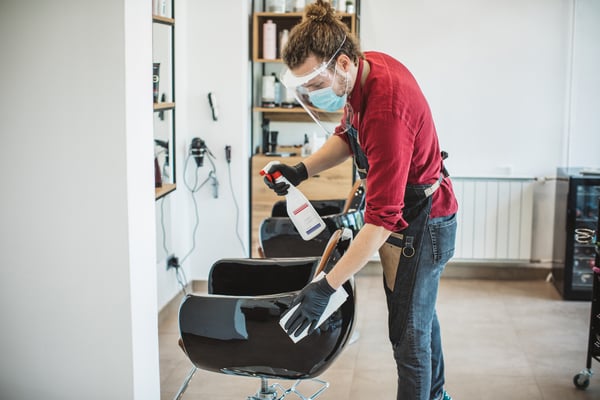
Cleaning, sanitizing and disinfecting have never been more important. They are vital to successfully executing your plan of safely bringing and keeping employees and customers back into the workplace.
But do you understand the difference between products that clean, sanitize and disinfect surfaces? This guide will help you understand the basics of each and their roles in keeping your workers and customers safe.
Clean, Sanitize or Disinfect?
Should you be sanitizing or disinfecting commonly touched surfaces throughout the office? Are you not sure? Understanding the differences between cleaning, sanitizing and disinfecting is key. When it comes to these terms, it’s not just semantics. Each is a distinct method of removing germs, dirt and impurities from surfaces or objects.
Cleaning is the physical process of removing dust, dirt, debris, germs, viruses and bacteria from a surface, typically using soap and water by scrubbing, washing and rinsing. While it doesn’t necessarily kill germs, by removing them from surfaces and objects—including hands—you lower the risk of spreading infection.
Sanitizing means removing and lowering the number of germs and bacteria found on surfaces and in laundry to a safe level, as judged by public health standards.
Disinfecting uses chemicals to destroy or inactivate both bacteria and viruses on hard, nonporous surfaces. While it doesn’t necessarily clean dirty surfaces or remove the germs, it kills germs and can lower the risk of spreading infection.
NOTE: There are many products registered with the EPA as both sanitizers and disinfectants because they've been tested using both standards. In order for these products to be effective, you must follow the directions for virucidal disinfection and pay close attention to the contact time, which is how long the surface must remain wet. This can often be several minutes.
Surface Cleaning and Disinfection
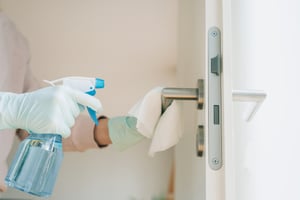
Establish clear procedures with your staff for the daily cleaning of common spaces and more frequent cleaning and disinfection of high-touch areas.
Always wear disposable gloves to clean and disinfect. (OSHA requires employers to provide gloves when disinfectants are being used.) First, clean surfaces using soap and water; then use disinfectant. Cleaning with soap and water will reduce the number of germs, dirt and impurities on the surface. Disinfecting will kill the remaining germs.
Pay extra attention to cleaning and disinfecting high-touch areas including desks, countertops, tables, doors (including door knobs and handles), handrails, faucet handles, copiers and elevator buttons.
Miller’s offers over 600 types of disinfecting products, including brands like Clorox, Lysol, Purell, Formula 409 and Seventh Generation.
Hand Washing and Hand Sanitization
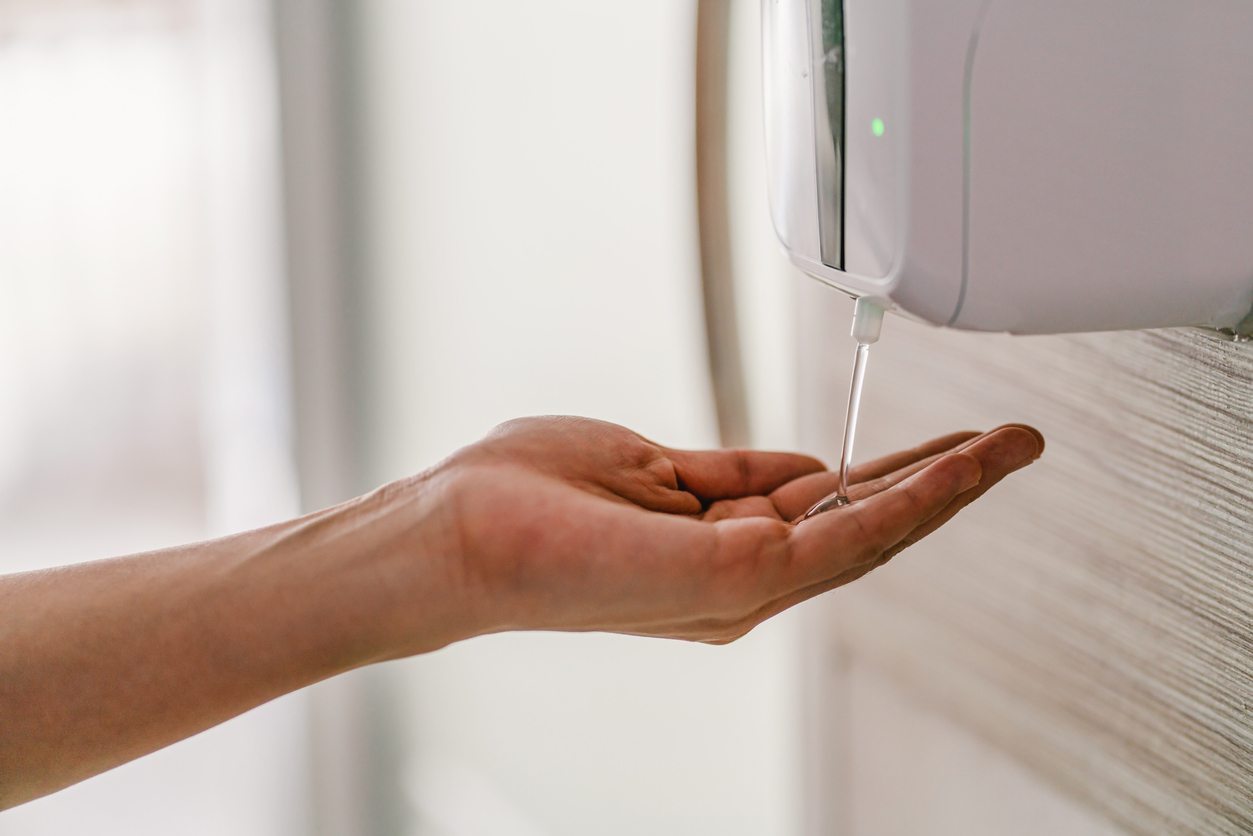
According to the CDC, proper hand washing is the number one thing you can do to prevent the spread of infection to others and yourself. But when hand washing is not an option, a good alternative is hand sanitization.
Make Sanitizer Easy and Accessible
The best way to remind employees to use hand sanitizer is by making it easily accessible and placing it within view. It’s important to keep hand sanitizer near high-touch surfaces and communal areas, including:
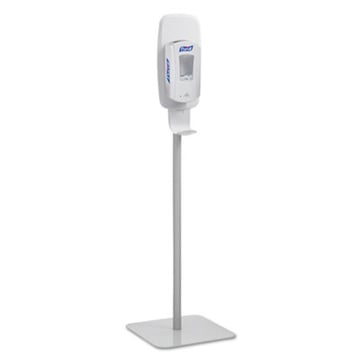
● Restrooms
● Entrances and Exits
● Breakrooms
● Meeting Rooms
● Employee Desks
● Transaction Counters
Miller’s offers a variety of wall-mounted, table-stand and floor-stand hand sanitizing stations like the Purell TFX Touch-Free Dispenser with a sight window that makes it easy to see when it’s time to refill. Miller’s also carries a variety of other brands of sanitizing stations that are equally effective.
The Bacterial Horror of Hot-Air Hand Dryers
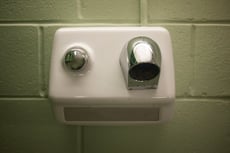
Hot-air hand dryers became very popular because they were touted as the eco-friendly alternative to paper towels. But a 2015 study in the Society for Applied Microbiology Journal found that hot-air hand dryers spread up to 1,300 times more bacteria than paper towels. Yikes!
Additionally, a review of evidence published in the Mayo Clinic Proceedings determined that from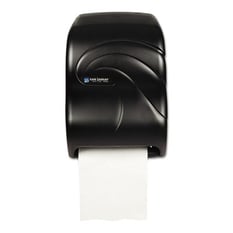 a hygiene viewpoint, paper towels are superior to electric air dryers. They concluded that paper towels are recommended in locations where hygiene is paramount, such as hospitals and clinics. Along with moisture, paper towels have been shown to physically remove bacteria. Touchless towel dispensers and soap dispensers are essential to keeping hand washing areas safe for your team.
a hygiene viewpoint, paper towels are superior to electric air dryers. They concluded that paper towels are recommended in locations where hygiene is paramount, such as hospitals and clinics. Along with moisture, paper towels have been shown to physically remove bacteria. Touchless towel dispensers and soap dispensers are essential to keeping hand washing areas safe for your team.
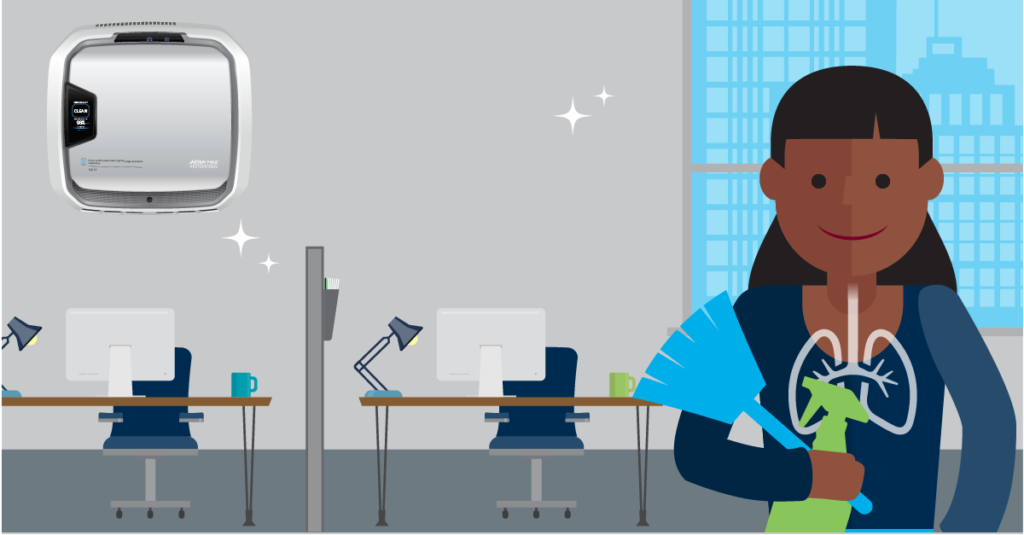
Cleaning the Air: Reducing Potential Airborne Transmission
The EPA recommends two precautions to reduce the potential for airborne transmission of the COVID-19 virus: increasing ventilation with outdoor air, and air filtration as part of a larger strategy that includes social distancing, wearing cloth face coverings or masks, surface cleaning and disinfecting, and hand washing.
Air purifiers like the Fellowes AeraMax Professional can scrub the air of up to 99.97% of airborne contaminants, including germs, viruses, flu, bacteria, odors, and volatile organic compounds (VOC) using a four-stage filtration system.
With AeraMax Professional’s PureView Technology, you can actually watch your indoor air getting clean because it shows particulate levels and tracks changes in your environment’s air as it works. Want to know more? Check out our webinar.
Contact the Miller’s Team to find out how AeraMax can improve the air in your office.
The Post-COVID Breakroom
What will the new breakroom experience look like when employees head back to the office? The same challenges of space and self-awareness that are experienced at the grocery store will impact the office. But because of the familiarity with co-workers, it will be easier to let your guard down when practicing social distancing.
Just like you plan your trip to the grocery store, plan your visit to the breakroom. This will reduce the time spent in the breakroom per visit, the frequency of visits and also limit the amount of items touched inside the breakroom. You can also equip the breakroom touchless solutions for paper towels and single-use, wrapped utensils.
Wash your hands when entering and when leaving the breakroom. Wash your hands thoroughly upon entering the breakroom, before you touch anything. Then thoughtfully and efficiently gather the items you need from the breakroom. And wash your hands again before returning to your workstation.
Let us help keep all of your workspaces cleaned, sanitized, disinfected and welcoming. Your Miller’s Account Manager can help source and manage the products you need to bring your team and customers back into the workplace safely. Call us at +1 (800) 451-3370 today.
===============================================
Resources
“Air Dryers vs Paper Towels.” Science, Science Based Medicine, sciencebasedmedicine.org/air-dryers-vs-paper-towels/.
“The Best Spots For Hand Sanitizer.” Buildingstars, 7 Mar. 2018, www.buildingstars.com/the-best-spots-for-hand-sanitizer/
“Cleaning and Disinfecting Your Facility.” Centers for Disease Control and Prevention, Centers for Disease Control and Prevention, www.cdc.gov/coronavirus/2019-ncov/community/disinfecting-building-facility.html
“Indoor Air and Coronavirus (COVID-19).” EPA, Environmental Protection Agency, 16 July 2020, www.epa.gov/coronavirus/indoor-air-and-coronavirus-covid-19.
John Ross, MD. “The Bacterial Horror of Hot-Air Hand Dryers.” Harvard Health Blog, Harvard University, 17 May 2018, www.health.harvard.edu/blog/the-bacterial-horror-of-the-hot-air-hand-dryer-2018051113823.
McCormick, Greg. “The Post-COVID Breakroom.” Belmont, Belmont, 15 May 2020, getbelmont.com/blog/covid19-newbreakroom.
Tista Ghosh, MD. “An Epidemiologist on How to Make a Return to the Office Plan.” Inc.com, Inc., 6 Aug. 2020, www.inc.com/tista-ghosh/an-epidemiologist-on-how-to-plan-a-return-to-office.html.
“What's the Difference between Cleaning, Sanitizing and Disinfecting?: Clorox®.” Clorox, Clorox, 30 June 2020, www.clorox.com/resources/coronavirus/whats-the-difference-between-cleaning-sanitizing-and-disinfecting/.
“What's the Difference between Products That Disinfect, Sanitize and Clean Surfaces?” EPA, Environmental Protection Agency, 22 May 2020, www.epa.gov/coronavirus/whats-difference-between-products-disinfect-sanitize-and-clean-surfaces.

